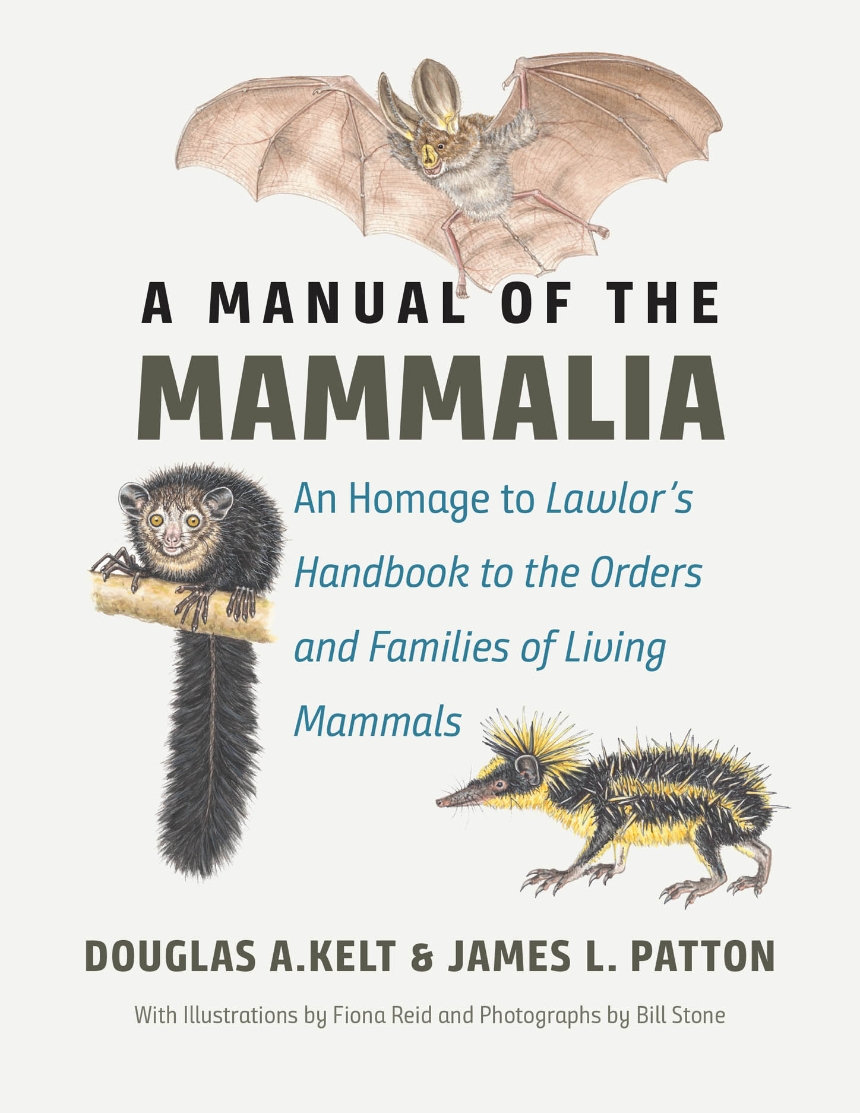A Manual of the Mammalia
An Homage to Lawlor’s “Handbook to the Orders and Families of Living Mammals”
A Manual of the Mammalia
An Homage to Lawlor’s “Handbook to the Orders and Families of Living Mammals”
The taxonomy of recent mammals has lately undergone tremendous revision, but it has been decades since the last update to Timothy E. Lawlor’s acclaimed identification guide the Handbook to the Orders and Families of Living Mammals. Integrating the latest advances in research, Douglas A. Kelt and James L. Patton provide this long-overdue update in their new, wholly original work, A Manual of the Mammalia.
Complemented by global range maps, high-resolution photographs of skulls and mandibles by Bill Stone, and the outstanding artwork of Fiona Reid, this book provides an overview of biological attributes of each higher taxon while highlighting key and diagnostic characters needed to identify skulls and skins of all recent mammalian orders and most families. Kelt and Patton also place taxa in their currently understood supra-familial clades, and discuss current challenges in higher mammal taxonomy. Including a comprehensive review of mammalian anatomy to provide a foundation for understanding all characters employed throughout, A Manual of the Mammalia is both a user-friendly handbook for students learning to identify higher mammal taxa and a uniquely comprehensive, up-to-date reference for mammalogists and mammal-lovers from across the globe.
544 pages | 513 halftones, 33 line drawings | 8 1/2 x 11 | © 2020
Biological Sciences: Anatomy, Physiology, Biomechanics, and Morphology
Reviews
Table of Contents
Acknowledgments
Postcranial Skeleton
Foot Posture and Foot Pads
Tooth Morphology
Types of Molar Occlusal Patterns
Specialized Molar Cusps
Crown Height and Root Development
Incisor Procumbency
Classification of Living Mammals
Order Paucituberculata
Order Microbiotheria
Order Notoryctemorphia
Order Dasyuromorphia
Order Peramelemorphia (= Peramelina)
Order Diprotodontia
Suborder Phalangeriformes
Suborder Macropodiformes
Clade Xenarthra
Order Pilosa
Suborder Vermilingua
Order Tenrecoidea
Suborder Tenrecomorpha
Order Sirenia
Order Rodentia
Suborder Castorimorpha
Suborder Myomorpha (= Myodonta)
Suborder Anomaluromorpha
Suborder Hystricomorpha (= Ctenohystrica)
Infraorder Ctenodactylomorphi
Infraorder Hystricognathi
Infraorder Lemuriformes
Infraorder Chiromyiformes
Infraorder Lorisiformes
Suborder Haplorrhini
Infraorder Tarsiiformes
Infraorder Simiiformes (= Anthropoidea)
Order Scandentia
Order Soricomorpha
Clade Yangochiroptera (= Vespertilioniformes)
Order Pholidota
Order Carnivora
Suborder Caniformia
Suborder Whippomorpha
Suborder Ruminantia
Infraorder Tragulina
Infraorder Pecora
Subclade Odontoceti
Glossary
Literature Cited
Index to Taxonomic Names above the Genus Level
